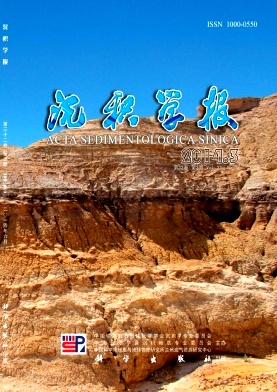Oncoids and Their Significance from the Second Member of the Mantou Formation(Cambrian Series 3), Dengfeng Area, Henan
- Received Date: 2013-04-03
- Rev Recd Date: 2013-05-21
- Publish Date: 2014-06-10
-
Key words:
- stromatolites /
- Henan /
- oncoids /
- controlling factors /
- the Second Member of the Mantou Formation /
- Cambrian Series 3
Abstract: The Second Member of Mantou Formation (Cambrian Series 3) exposed well in Dengfeng area of Henan and characterized by purple and isabelline thick-bedded mudstone interbedded with stromatolite limestones, oncloidal limestones and oolitic limestones. Abundant oncoids are well preserved in the lower part of the Member. The paper have done further researches on macroscopic morphological characters, microscopic cortex characters, microbial fossils and their calcification, and the formation and controlling factors of oncoids using the actualism of “the present is the key to the past”. The study provides evidence for the reconstruction of Cambrian palaeoenvironments of western Henan and the understanding of co-evolution between microbe and metazoan. There are three types of oncoids from the Second Member of the Mantou Formation(Cambrian Series 3), Dengfeng Area, Henan: the spherical and axiolitic oncoids are found in association with big columnar stromatolites and formed in high-energy subtidal environment; the long olivary oncoids are related to small columnar stromatolites and preserved in low- to moderate-energy intertidal environment; the irregular oncoids and their companion nearly horizontal and gently wavy-shaped stromatolites are dominant in low-energy supratidal and intertidal environment. The oncoids are often preserved in carbonates together with stromatolites in the study area. The setting containing oncoids and stromatolites is composed of three developing stages form bottom to top. The first stage is dominated by long olivary oncoids and small columnar stromatolites. The microbes wrapped up the carbonate particles to grow around the long olivary bioclastic and gravel core and formed long olivary oncoids under low to medium-energy condition or small columnar stromatolites under low-energy condition. The second stage consists of spherical and axiolitic oncoids and big columnar stromatolites. The microbes wrapped up the carbonate particles by intertwined grow of filaments and trapping and bounding of sticky EPS and formed evenly alternating of light and dark laminae under high-energy condition which lead to the formation of regular spherical and axiolitic oncoids and big columnar stromatolites. The third stage is characterized by stoamtolite-like oncoids and wavy stromatolites. The spherical and axiolitic oncoids in second stage stopped to agitate as the descending of sea 1evel. The laminae of oncoids began to grow upwards in place at this time. The result is that the spherical and axiolitic oncoids can gradually become to stoamtolite-like oncoids. All oncoids totally become to wavy stoamtolites and eventually disappear in carbonate sediments as the continued descending of sea level. The genetic analysis on oncoids shows that there is a coupling relationship between microbiogenic structures and metazoan disturbed structures; water energy is the determining factor for the changes of oncoid types; the influx of terrigenous clays is the most direct factor for oncoid growth and their ultimate demise.
| Citation: | Oncoids and Their Significance from the Second Member of the Mantou Formation(Cambrian Series 3), Dengfeng Area, Henan[J]. Acta Sedimentologica Sinica, 2014, 32(3): 410-417. |






 DownLoad:
DownLoad: